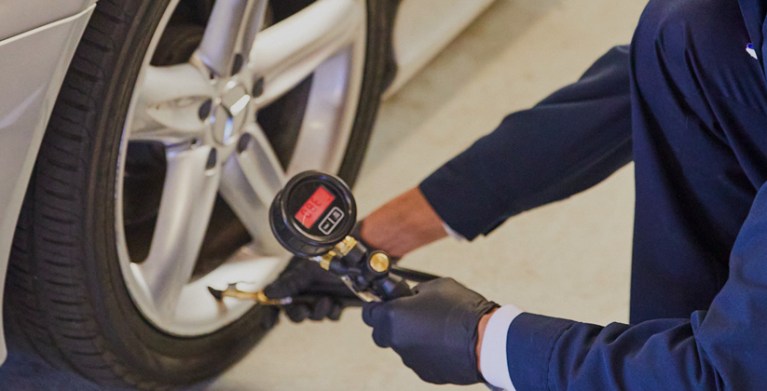Morris Tire: Your Relied On Neighborhood Tire Professionals
Morris Tire: Your Relied On Neighborhood Tire Professionals
Blog Article
Tire Fixing Myths Debunked: Separating Reality From Fiction
In the world of automotive upkeep, tire fixing holds a considerable location, yet it is frequently shrouded in misconceptions and false impressions that can cause complication for automobile owners. Comprehending the distinction between fact and fiction when it concerns tire repair service is critical for making sure both safety and cost-effectiveness. From the false impressions bordering patching versus connecting a pierced tire to the efficiency of different tire sealers, there are numerous vital areas where quality is needed to make educated decisions. Let's clarify some common tire repair myths and separate them from the truth to encourage you with the expertise needed to navigate this necessary facet of automobile maintenance.
Common Tire Repair Misconceptions
Resolving common misconceptions bordering tire fixing is essential for preserving road security and prolonging the longevity of your lorry's tires. It is important to comprehend that not all punctures are produced equivalent; while some might without a doubt call for a tire substitute, the majority can be securely repaired.
An additional misconception is the idea that a DIY tire repair package is an adequate remedy for all tire concerns. While these kits can be helpful for momentary solutions in emergencies, they are not a permanent option and may not attend to the underlying issue (morris tire). Seeking the experience of a certified tire technician is always recommended to make certain the safety and stability of the tire

Can You Fix a Punctured Tire?
Fixing a punctured tire is a common technique in the automobile industry, typically executed by specialist technicians complying with specific guidelines and standards. Nevertheless, not all leaks can be repaired. The location, size, and severity of the slit are vital aspects in identifying if a tire is repairable. Leaks found on the walk location of the tire are normally repairable as long as they are within a certain size restriction and do not impact the tire's structural stability.
It is very important to note that pierces near the sidewall or shoulder anonymous of the tire are usually not repairable because of security problems. Such areas go through significant stress and flexing, making fixings unreliable and possibly harmful. In addition, if the slit is as well large, going beyond the recommended repairable size, or if the tire shows indicators of internal damages, it is more secure to change the tire entirely.
The Truth About Patching Vs. Connecting
When thinking about the repair work of a pierced tire, comprehending the distinctions in between patching and plugging is essential for making educated decisions pertaining to tire upkeep and safety and security. Covering entails fixing the tire from the inside, where a spot is used to cover the slit.
Myth: All Tire Sealants Work

When picking a tire sealer, take into consideration factors such as the size of punctures it can efficiently fix, compatibility with tire stress tracking systems (TPMS), and whether it is risk-free for the tire material. Remember, while tire sealants can be helpful in emergency situations, they are not an alternative for appropriate tire care and upkeep.
Best Practices for Handling Apartment Tires
Taking into account the differing effectiveness of tire sealers, comprehending finest techniques for dealing with blowouts is important for preserving road safety and car efficiency. When experiencing a puncture, the initial step is to safely draw over sideways of the road, far from oncoming web traffic. Activate danger lights to alert various other drivers of your scenario. It is suggested to use the emergency brake and location wheel wedges under the tires to stop the lorry try this site from rolling. Next, consult your vehicle's handbook to locate the spare tire, jack, and lug wrench. Before attempting to alter the tire, ensure that the area is level and secure. Loosen the lug nuts, raise the vehicle with the jack, eliminate the lug nuts and puncture, and replace it with the extra tire. Tighten the lug nuts in a celebrity pattern, lower the car, and securely tighten up the lug nuts. Finally, store away the blowout, tools, and equipment, and keep in mind to check the extra tire's stress periodically. Adhering to these finest techniques can assist you manage punctures efficiently and safely.
Final Thought
Finally, it is essential to different reality from fiction when it concerns tire repair service misconceptions. Recognizing the fact concerning patching vs. plugging, the effectiveness of tire sealants, and best methods for taking care of flat tires can aid guarantee the safety and security and long life of your tires. By disproving common mistaken beliefs and following correct repair guidelines, you can make educated choices when it comes to preserving the health of your lorry's tires.
Report this page